The sunny side of bush life near the Forgotten World Highway
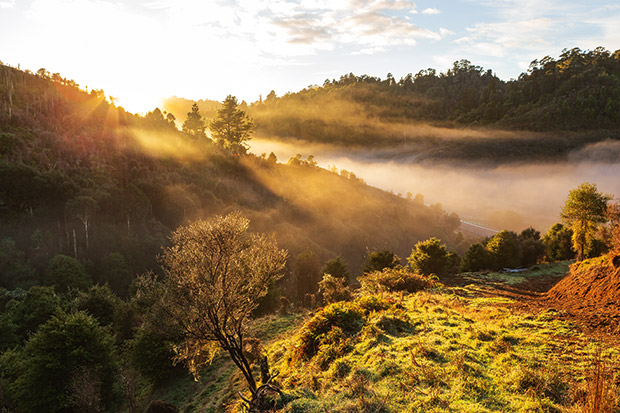
A backcountry hut along the Forgotten World Highway lights up thanks to the sun.
Words Nadene Hall Photos: Jane Dove Juneau
Who: Kerry Kelly-Drought & Michael Drought
Where: 100km east of New Plymouth
What: solar panels producing 10KWh, inverter, battery bank, back-up generator
Land: 202ha of regenerating native bush
When Michael and Kerry first started spending weekends on their block, deep in the bush along the Forgotten World Highway, they used to take their little camper van so they could still have a hot shower.
Today, they’ve transformed the old pole barn on the property into a gorgeous off-grid getaway with hot water. By the time you read this, they’ll be basking in the power from 10 new solar panels that they’re adding to the upper portion of roof.
“It’s good because the whole roof is north-facing,” says Michael. “(The new panels) are on the next level of the roof at a higher point above the old ones, and they fit nicely so they’re all tidily tucked away.”
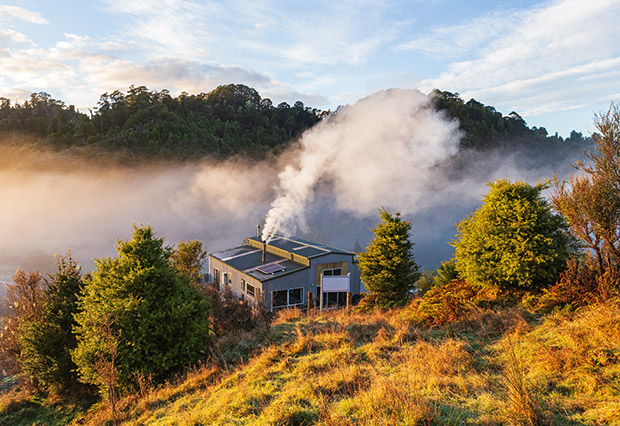
Their first system had just two panels which were enough to run the lights. The new system is a big upgrade, although still small by off-grid standards.
“It’s enough to power the lights, a fridge-freezer when we’re here, stereo, and I’ve got a few musician friends who come out and stay and they can plug in their guitars and do whatever. We try and keep power use to a minimum – you’re not going to run big appliances on it but we don’t need them.”
They’ve added other essentials to the now 144m² hut, including a flushing toilet and a bunk room for their nine grandchildren, but it’s still a pretty simple place. There’s no internet and unreliable cell reception.
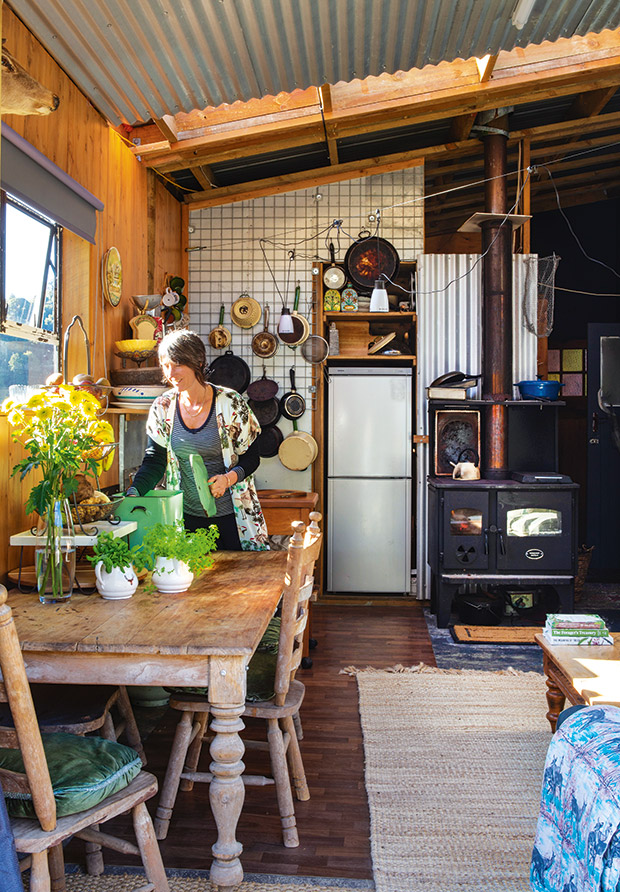
Winter cooking and heating comes from their wood-burning Wagener stove.
“Life slows down when we’re off-grid in the bush,” says Michael. “It makes us stop and enjoy the environment. Filling up the bathtubs, gathering firewood, heating the coal range – everything takes longer here.”
For cooking, they have a barbecue in summer and their beloved Wagener stove for winter. “We use that to heat the living area and the kitchen, for cooking in winter, and it doesn’t use a lot of wood.”
The new system means it’s now simpler to power up the hut when they arrive. “I’ve made it a bit more user-friendly. Kerry wants to run retreats, so they can just walk in, turn a switch on and they have water, and what they need. There’s not a lot we have to run because there’s not a huge demand like a normal household.”
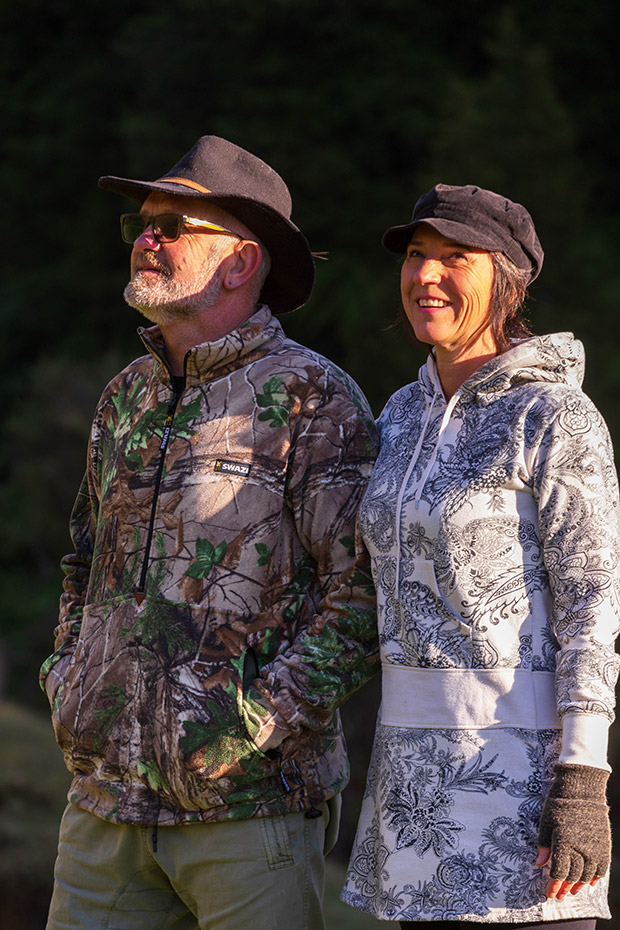
In the past, when they needed to run appliances like the vacuum or washing machine, Michael would turn on the generator. The new panels mean the system can now cope, and run the 1hp pump for the water supply.
“We catch rainwater from the roof in a tank, then pump it up the hill to a holding tank, and it gravity-feeds back down to the hut. We used to run it once a week, but now it’s permanently plumbed in with a pressure switch so it fills up as needed.”
THE BATTERIES
The system still uses the original batteries Michael bought when he first installed it in 2014. To keep them operating efficiently, they’re housed in an insulated box.
“They’re big, heavy, sealed gel-type batteries – the newer ones coming along are much better.
“You don’t want them sitting on concrete. My ones are on a wood frame, and I’ve insulated the box with polystyrene to keep them at an even temperature.
“Another thing I’ve learned over time from running the batteries flat – if you run them down too much, you ruin them. We’ve got a generator set up to switch on if they drop below 20% from the top (of their charge).
I thought you could run a deep cell battery flat, but they’re more like a car battery.
“The way we have them set up now, we’re not draining them down, and if we get 10 years or better out of them, I’ll be happy with that.”
THE BEST BUY
While he loves the new solar panels, his favourite buy in the last year was a wood burner-heated spa pool. “It’s amazing! Once you learn how much wood you need, it takes about four hours to heat up, and we use that every time we get out there.”

When we spoke to Michael, he was waiting to improve the area around the spa by putting up a wall to shelter it. “But I didn’t want to block the view of the bush, so I got a whole house lot of windows for $600. It has some big glass panels, so that’s going to be a glass wall and we can still see the bush.”
The couple has considered joining the grid as they spend more and more time at the hut, but running on the sun resonates for Michael. “I love being off the grid, it’s something different. People ask me why I like being here, but you go walking in the bush, or I sit in the spa pool and watch the deer – I love that.”
HOW DO SOLAR PANELS WORK?
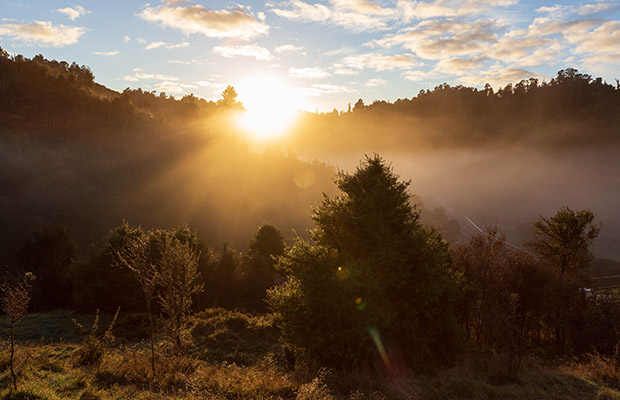
■ Panels are made up of light-absorbing cells, protected by glass or plastic.
■ Each cell contains layers of a semi-conducting material, usually silicon. The silicon is ‘doped’ with phosphorous (for a positive charge) or boron (for a negative charge).
■ When photons (light particles) hit the silicon, it creates an electrical charge which is collected by metal plates and transferred into wires.
Love this story? Subscribe now!
 This article first appeared in NZ Lifestyle Block Magazine.
This article first appeared in NZ Lifestyle Block Magazine.
